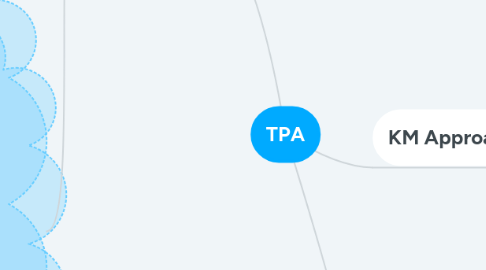
1. Profile
1.1. Technology Project Authority, a state-level government agency in the United State. Established in 2000 by the State Governor
1.2. Employee: close to 350 people
1.3. Objective: To create a more efficient and responsive government through the innovative use of technology
1.4. Responsibilities
1.4.1. To Oversee governmental IT projects costing more than $1 million;
1.4.2. To establish policies and standards for technology and IT security used by the state agencies;
1.4.3. To coordinate governmental IT purchases consistent with established policies and standards;
1.4.4. To facilitate statewide strategic planning with regards to the state's information systems and telecommunication networks
2. Organization Structure
2.1. Board of Directors
2.1.1. Executive Director & State CIO
2.1.1.1. Finance Division
2.1.1.1.1. IT Department (Rita Carson) : Responsible for all of the IT projects within TPA
2.1.1.2. Project Planning Division (Andrew Collins): Responsible for external IT projects
2.1.1.3. Operations Division (Harry Linton)
2.1.1.3.1. Project Management : Responsible for project management aspect of a project
2.1.1.3.2. Solutions Development : Responsible for technological development and deployment
3. KM Approach
3.1. Phase I
3.1.1. 2001: Decision to improve KM
3.1.1.1. Reduce Inefficiency within and across divisions Set of tools were used to facilitate the KM activities; email, discussion forum, shared drives, etc
3.1.1.2. Result: Very few from three divisions changed their work practice to include KM activities
3.1.2. 2004: Decision to adopt a formal approach to KM
3.1.2.1. Shared drives as the main electronic repository
3.1.2.2. Problem: Shareddrive could not deal with version control, and redudancy
3.1.2.3. Result: Project teams preferred not to use shared drives. Resulting the need to acquire a more effective repository that would integrate knowledge from various sources
3.2. Phase II
3.2.1. 2005-2006: SharePoint
3.2.1.1. SharePoint : browser based collaboration and document-management platform to support KM activities and is highly customizable
3.2.1.2. Problem
3.2.1.2.1. Default structure, received too many complains due to it being too general and was interpreted differently by various users
3.2.1.2.2. The use of SharePoint as high-level audit tool, rather than sharing tool. Due to restrictions that some files can only be accessed by the member of that project
3.2.1.3. Result
3.2.1.3.1. Some project teams chose not to use SharePoint, the lack of clear standards reinforcing the use and adoption of SharePoint contributed to general perception that executive team has to reassess their need before deciding on a specific technology
3.3. Phase III
3.3.1. SharePointProject
3.3.1.1. SharePointProject: multi-user networking system, provides details about the projects and automatically integrate data and information from other sources.
3.3.1.2. Problem
3.3.1.2.1. SharePointProject requires collaboration from every TPA employee in order to provide an integrated view of a project
3.3.1.2.2. Technical problems due to aging servers that need to be replaced
3.3.1.2.3. Many project managers were too busy and could not attend the training sessions
3.3.1.3. Result
3.3.1.3.1. By the end of 2007 they implemented the platform throughout three divisions. Migrating and converting all of the existing project data to SharePointProject
